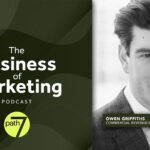By Ethan Hanson, Sr. Director, Brand & Experience Strategy at Merkle
Brands are increasingly turning to identity to future-proof their marketing while delivering great customer experiences – and we’re all for it! But too often we see investments in the right data, technology, messaging, and more go to waste because the core user experience isn’t good enough.
For brands to fully capitalize on human-centered advertising, they must also implement human-centered design. Human-centered design uses clear audience definition and iterative feedback to create better experiences. It strikes the right balance between quality and speed-to-market, which leads to positive short- and long-term results for both the brand and the user.
As you jump into executing a human-centered design project, here are three of our best practices to get the outcomes you’re after.
1. Identify business and user needs.
You might be surprised to find the brand’s needs listed first, but without the business, there is no customer (and vice versa, of course). Addressing the needs of the business early can help secure buy-in – and when colleagues, partners, and executives are on board, implementation often moves faster and smoother.
You can balance the needs of your organization and its customers by taking a pause to ask simple, yet important, questions, like:
- What are our core objectives?
- What key performance indicators will help us to determine the success of those objectives?
- Who are we designing for?
Bringing solid data insights on your target audiences to the table can help address these questions with greater specificity and bolster internal support.
Once these questions are answered, the alignment to key audiences and understanding of their needs becomes the framework for future design.
2. Identify audiences that align to your brand’s beliefs.
This, too, may seem counterintuitive in human-centered design, but knowing your brand identity and standing firmly behind it is key to creating authentic connections and experiences. If you try to sell to everyone, you’ll sell to no one.
Start by identifying your brand beliefs and then seek audiences that align with those beliefs. If your message turns some people away, you’re probably doing the right thing. The key is to begin identifying your current audiences in the market. The closer you can get to your key audience with the right message, the higher your response rates and lower your cost of acquisition will be. Let’s look at a very basic example: if you’re hiring future educators, would you send an email to the entire graduating student body at a university or the students specifically studying to become an educator? Let’s get more granular – what if you could find students in the education building who are graduating and have opted into mobile location identity on their mobile phones? New tech allows for targeting people within a specific geo-location, even if they’re not in your first-party database – now that’s identity! The right target, the right time, in the right place.
The key is to find relevant people you can target to increase traffic to your experience so you can accumulate valuable insights into how it’s working (or not). Target, tailor, test, and repeat.
3. Balance brand innovation with user feedback.
Steve Jobs said it best:
“Some people say, ‘Give the customers what they want.’ But that’s not my approach. Our job is to figure out what they’re going to want before they do. I think Henry Ford once said, ‘If I’d asked customers what they wanted, they would have told me, ‘A faster horse!’’ People don’t know what they want until you show it to them.”
As creators, innovators, and marketers, it’s our job to find effective, sometimes novel ways to address critical moments in the customer journey. However, it’s important that we don’t ignore the last piece of the quote above: show it to them. The iterative process of real-time human feedback before market launch can drive significant changes in user experience – and prevent headaches down the road.
Imagine planting a bad seed and then cultivating it to find minimal production. This is the same as brands placing ill-prepared content in the market, cultivating it by boosting ad spend, and producing lackluster results. Businesses that take pause, identify what is good through iterative feedback, and then launch can realize long-term improvements with a relatively minimal short-term sacrifice in time to market. To maintain some speed to market, focus on the most critical parts of the user journey – and remember, sometimes simple and straightforward will excite customers more than new and complex.
If you need to get scrappy, set up a Zoom call. If you can be more polished, set up proper screening, recruitment, and quota structures. Either way, at a minimum, identify your core target and talk to them – you might be surprised by what you find.
Conclusion
Investing in identity-powered marketing is important – but it’s only part of the equation for creating great customer experiences. By implementing human-centered design, you can make the most of your investments, delight users across their entire journey, and forge enduring relationships – a win/win for your brand and customers alike.






